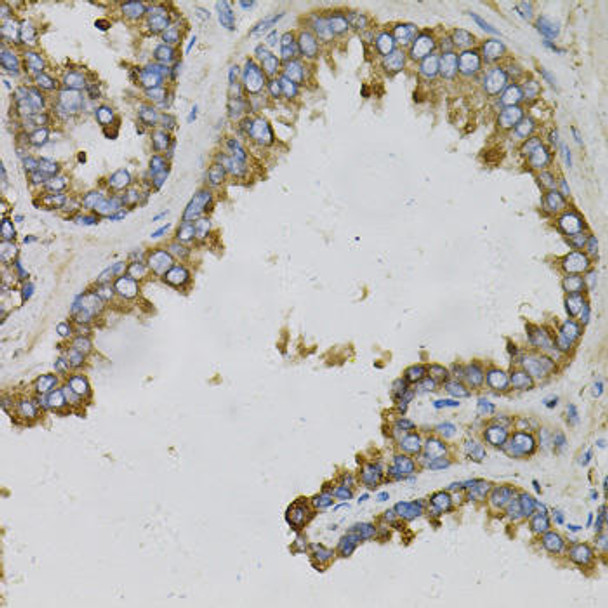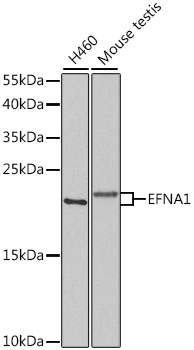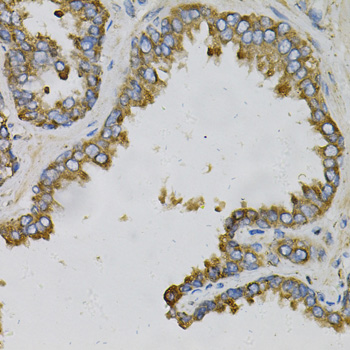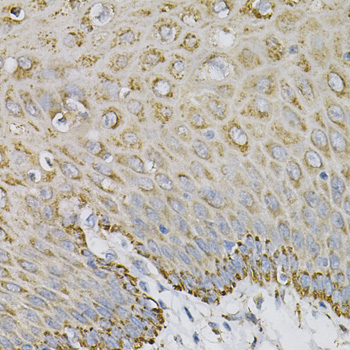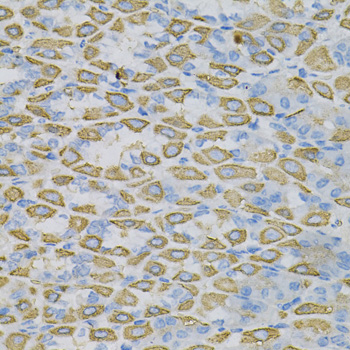| Synonyms: | EFNA1, B61, ECKLG, EFL1, EPLG1, LERK-1, LERK1, TNFAIP4, ephrin-A1 |
| Background: | This gene encodes a member of the ephrin (EPH) family. The ephrins and EPH-related receptors comprise the largest subfamily of receptor protein-tyrosine kinases and have been implicated in mediating developmental events, especially in the nervous system and in erythropoiesis. Based on their structures and sequence relationships, ephrins are divided into the ephrin-A (EFNA) class, which are anchored to the membrane by a glycosylphosphatidylinositol linkage, and the ephrin-B (EFNB) class, which are transmembrane proteins. This gene encodes an EFNA class ephrin which binds to the EPHA2, EPHA4, EPHA5, EPHA6, and EPHA7 receptors. Two transcript variants that encode different isoforms were identified through sequence analysis. |
| UniProt Protein Function: | Cell surface GPI-bound ligand for Eph receptors, a family of receptor tyrosine kinases which are crucial for migration, repulsion and adhesion during neuronal, vascular and epithelial development. Binds promiscuously Eph receptors residing on adjacent cells, leading to contact-dependent bidirectional signaling into neighboring cells. Plays an important role in angiogenesis and tumor neovascularization. The recruitment of VAV2, VAV3 and PI3-kinase p85 subunit by phosphorylated EPHA2 is critical for EFNA1-induced RAC1 GTPase activation and vascular endothelial cell migration and assembly. Exerts anti-oncogenic effects in tumor cells through activation and down-regulation of EPHA2. Activates EPHA2 by inducing tyrosine phosphorylation which leads to its internalization and degradation. Acts as a negative regulator in the tumorigenesis of gliomas by down-regulating EPHA2 and FAK. Can evoke collapse of embryonic neuronal growth cone and regulates dendritic spine morphogenesis. |
| NCBI Summary: | This gene encodes a member of the ephrin (EPH) family. The ephrins and EPH-related receptors comprise the largest subfamily of receptor protein-tyrosine kinases and have been implicated in mediating developmental events, especially in the nervous system and in erythropoiesis. Based on their structures and sequence relationships, ephrins are divided into the ephrin-A (EFNA) class, which are anchored to the membrane by a glycosylphosphatidylinositol linkage, and the ephrin-B (EFNB) class, which are transmembrane proteins. This gene encodes an EFNA class ephrin which binds to the EPHA2, EPHA4, EPHA5, EPHA6, and EPHA7 receptors. Two transcript variants that encode different isoforms were identified through sequence analysis. [provided by RefSeq, Jul 2008] |
| UniProt Code: | P20827 |
| NCBI GenInfo Identifier: | 73920206 |
| NCBI Gene ID: | 1942 |
| NCBI Accession: | P20827.2 |
| UniProt Secondary Accession: | P20827,Q5SR60, Q5SR61, Q6I9T9, Q8N578, D3DV86, |
| UniProt Related Accession: | P20827 |
| Molecular Weight: | 21,246 Da |
| NCBI Full Name: | Ephrin-A1 |
| NCBI Synonym Full Names: | ephrin A1 |
| NCBI Official Symbol: | EFNA1 |
| NCBI Official Synonym Symbols: | B61; EFL1; ECKLG; EPLG1; LERK1; LERK-1; TNFAIP4 |
| NCBI Protein Information: | ephrin-A1 |
| UniProt Protein Name: | Ephrin-A1 |
| UniProt Synonym Protein Names: | EPH-related receptor tyrosine kinase ligand 1; LERK-1 |
| Protein Family: | Ephrin |
| UniProt Gene Name: | EFNA1 |

